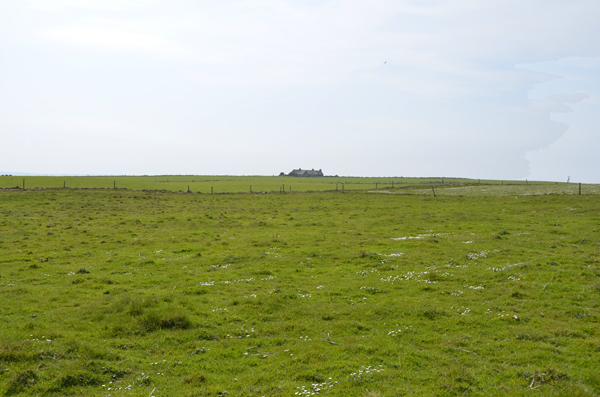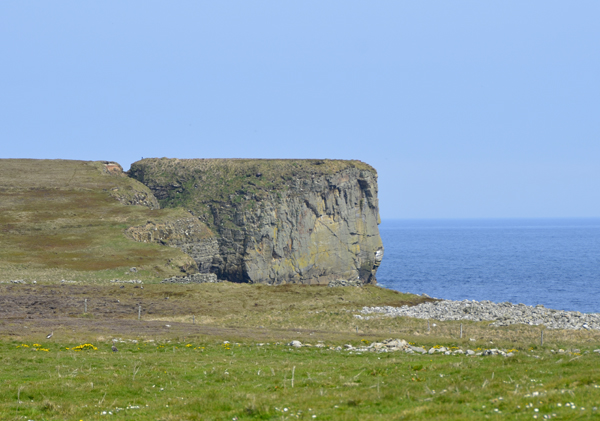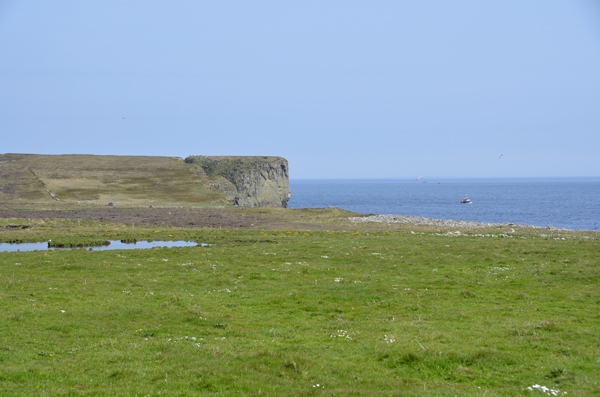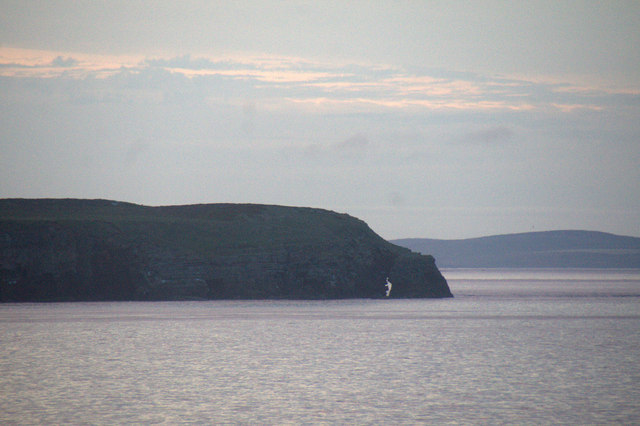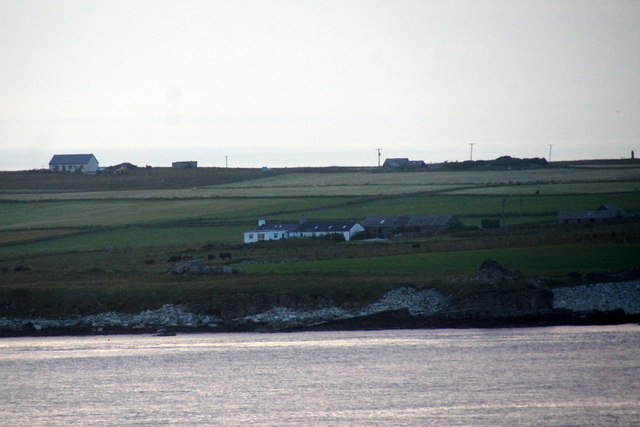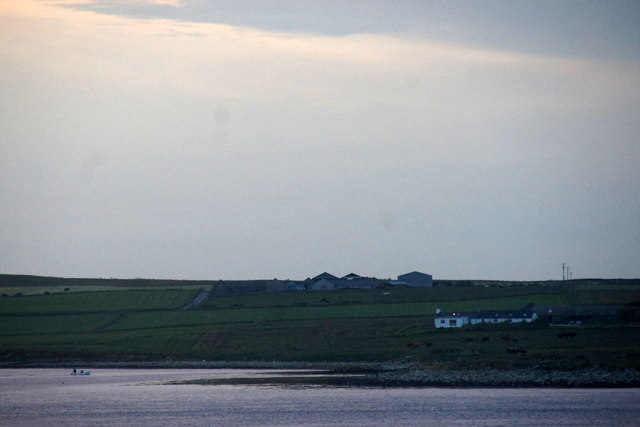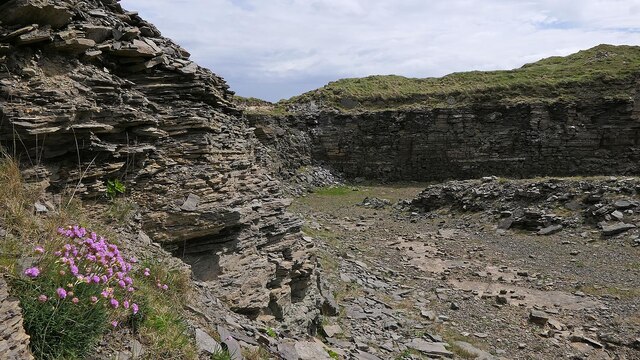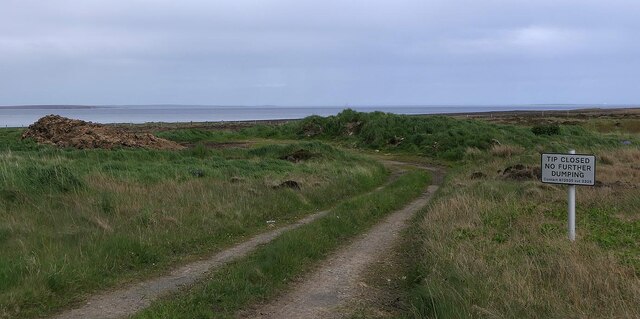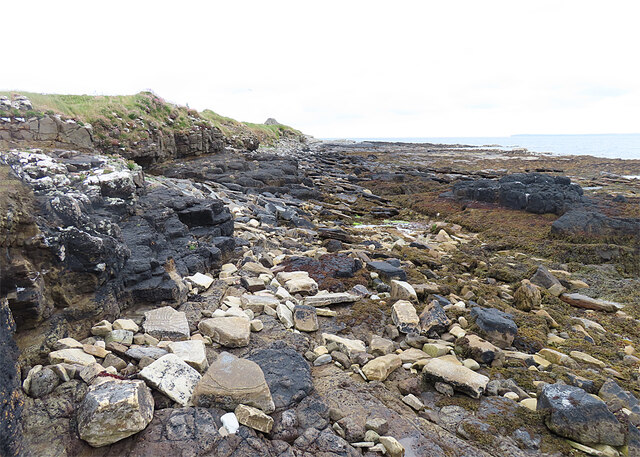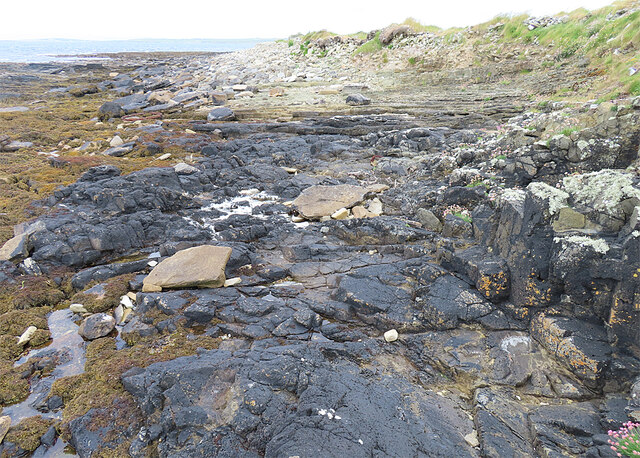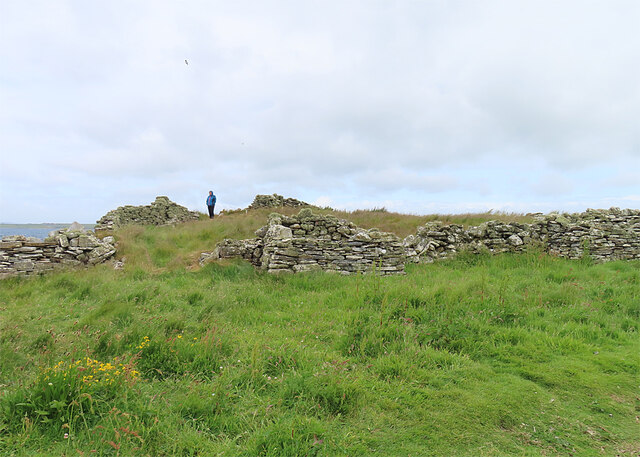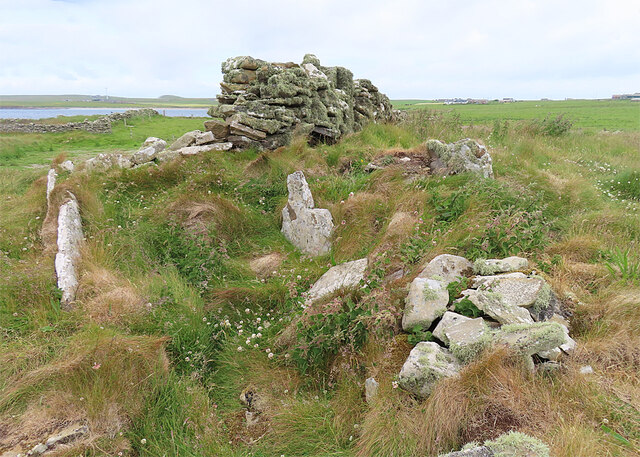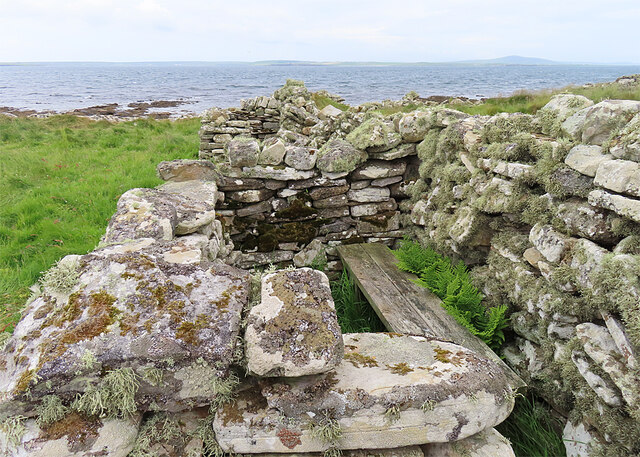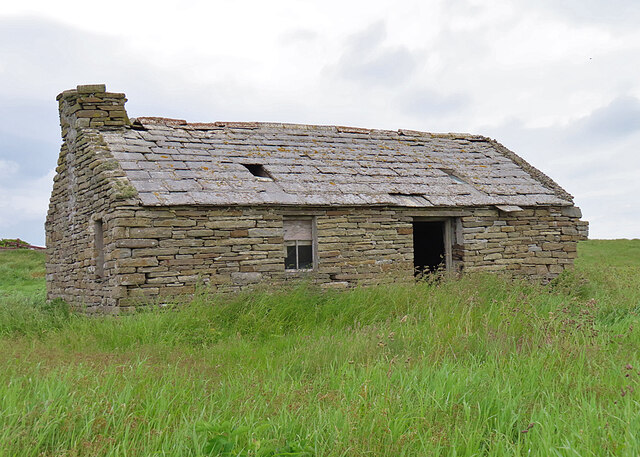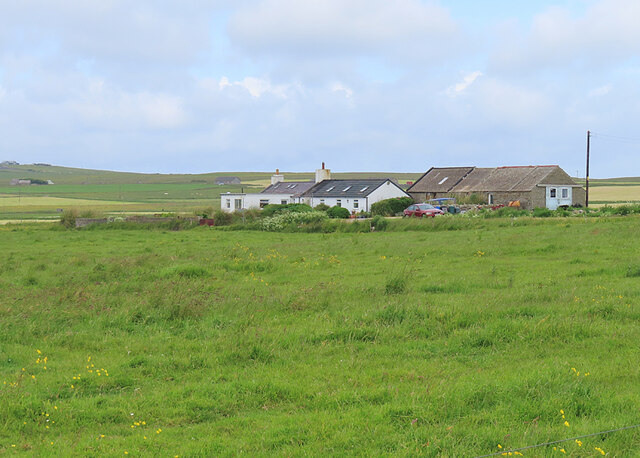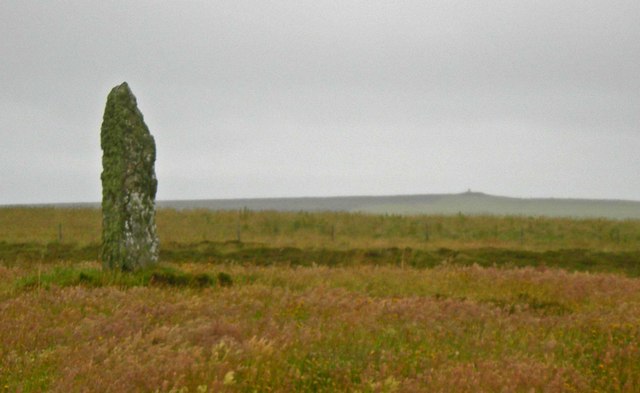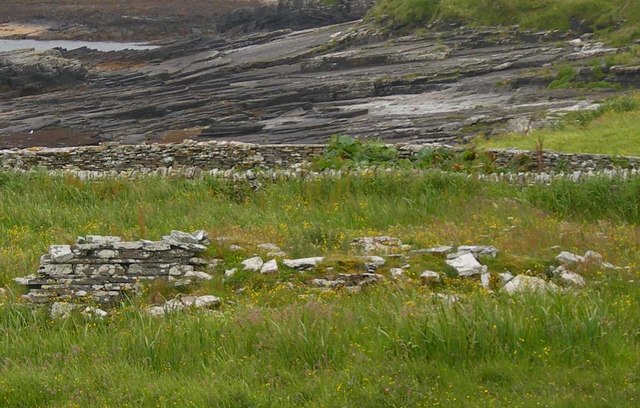The Dochins
Coastal Feature, Headland, Point in Orkney
Scotland
The Dochins
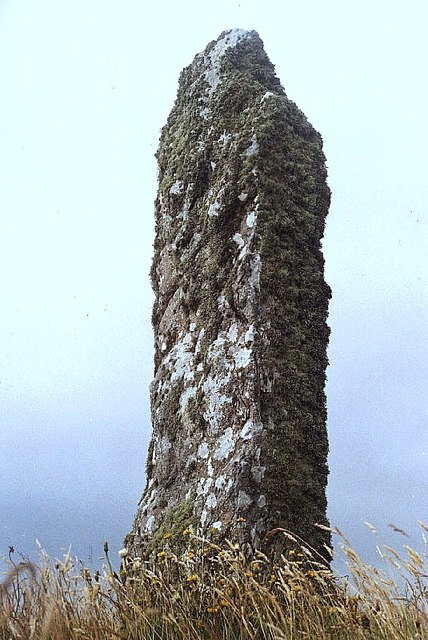
The Dochins is a prominent coastal feature located in Orkney, a group of islands situated off the northeastern coast of Scotland. It is specifically classified as a headland, also known as a point, due to its distinctive shape and geographical formation.
The Dochins stands out due to its sheer cliffs, which rise dramatically from the turbulent waters of the North Sea. These cliffs are composed of rugged sandstone and can reach impressive heights of up to 100 meters. The rock face is weathered and eroded, showcasing various geological formations and providing a habitat for a diverse range of bird species.
The headland is renowned for its breathtaking panoramic views, offering visitors a stunning vista of the surrounding coastline and the vast expanse of the ocean. The Dochins is particularly popular among hikers and nature enthusiasts, who can explore the numerous walking trails that traverse the area.
The landscape surrounding The Dochins is characterized by its wild and untamed beauty. The headland is often buffeted by strong winds, creating a sense of exhilaration and a connection with the raw power of nature. The area boasts a rich marine ecosystem, with seals, dolphins, and various seabirds frequently spotted in the waters and skies surrounding The Dochins.
Given its striking appearance and unique geological features, The Dochins has become an iconic landmark in Orkney. Its natural beauty and captivating vistas make it a must-visit destination for those seeking a true coastal experience in this remote and enchanting part of Scotland.
If you have any feedback on the listing, please let us know in the comments section below.
The Dochins Images
Images are sourced within 2km of 59.02704/-2.8093248 or Grid Reference HY5315. Thanks to Geograph Open Source API. All images are credited.
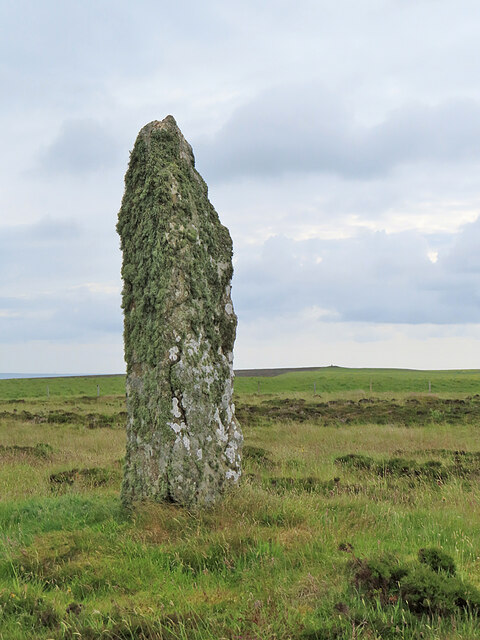
The Dochins is located at Grid Ref: HY5315 (Lat: 59.02704, Lng: -2.8093248)
Unitary Authority: Orkney Islands
Police Authority: Highlands and Islands
What 3 Words
///clockwork.nursery.chuckle. Near Balfour, Orkney Islands
Nearby Locations
Related Wikis
Castle Bloody
Castle Bloody is a prehistoric feature on the island of Shapinsay, Orkney, Scotland. Hogan observes that while the feature is marked as a chambered mound...
Mor Stein
Mor Stein is a neolithic standing stone in the southeastern part of the island of Shapinsay, Orkney Islands, Scotland. Shapinsay is one of the two large...
Bay of Linton
The Bay of Linton is a bay on the east coast on the island of Shapinsay in the Orkney Islands, Scotland. To the north of Linton Bay are the headlands...
Linton Chapel
Linton Chapel is a ruined chapel on the east coast of Shapinsay, Orkney (Grid Reference HY5218). The chapel is thought to date as early as the 12th century...
Have you been to The Dochins?
Leave your review of The Dochins below (or comments, questions and feedback).
